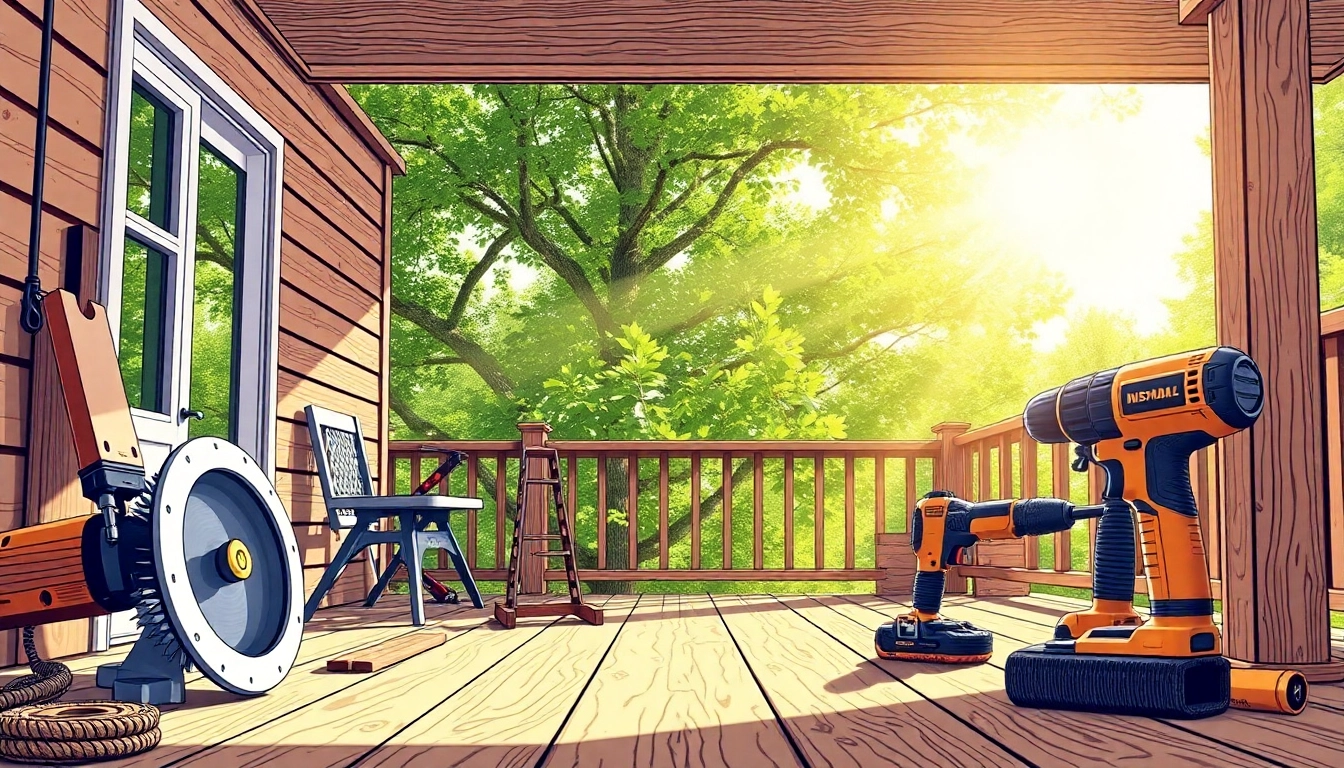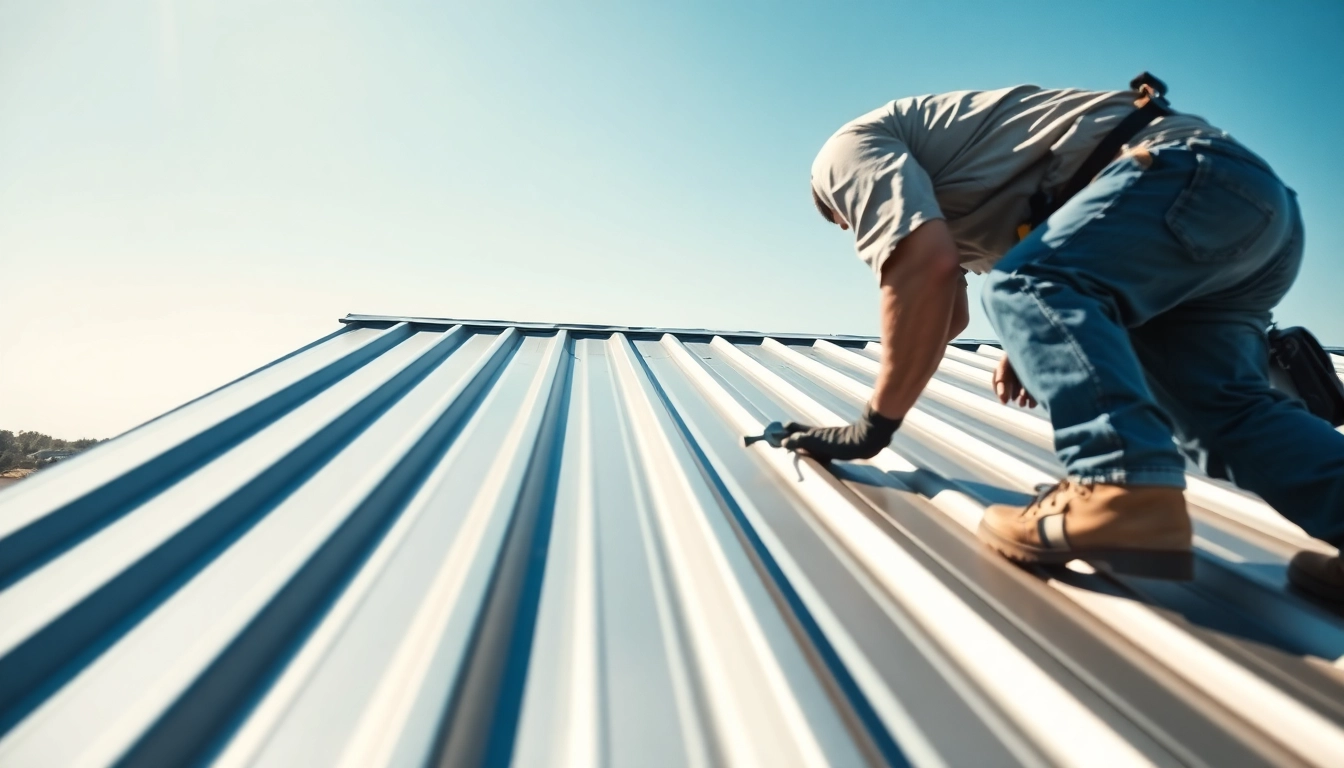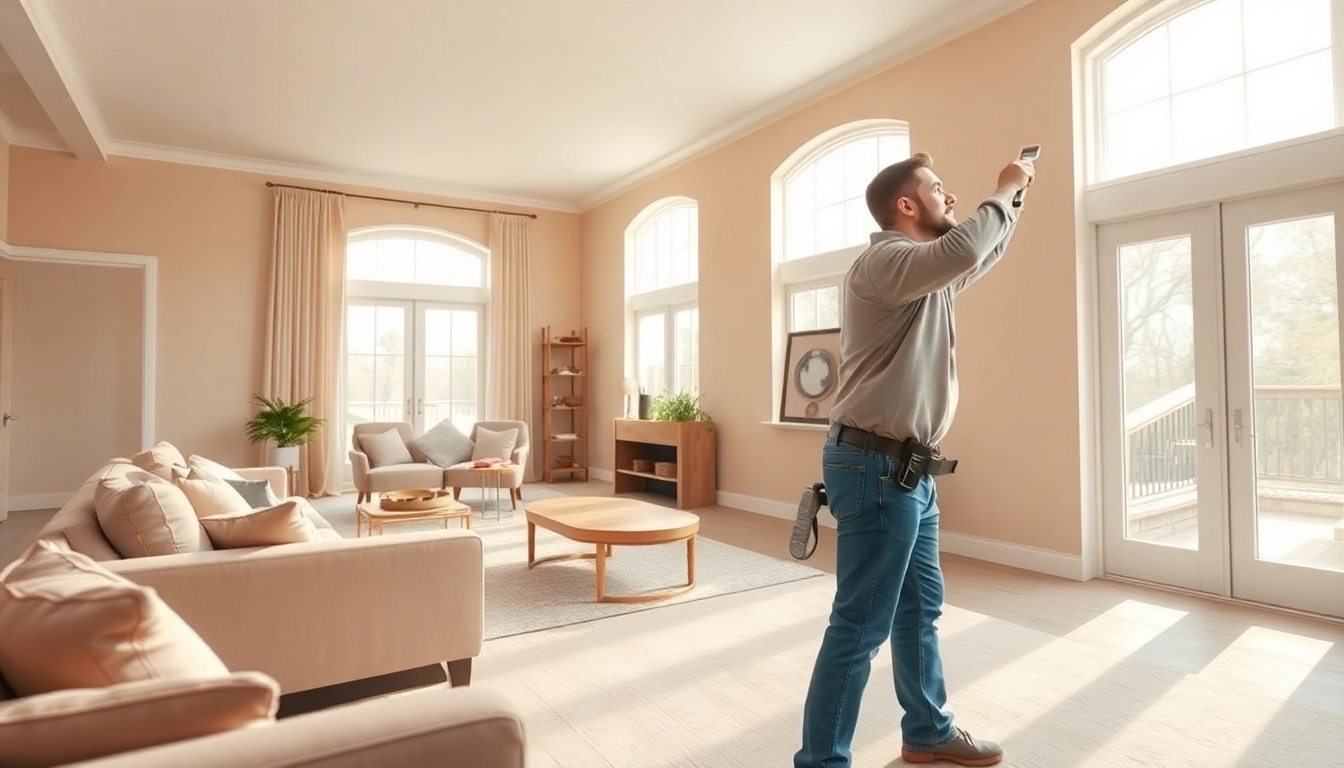Understanding Deck Construction Basics
Deck construction is a rewarding home improvement project that transforms outdoor spaces into functional and aesthetic areas for recreation, relaxation, and entertainment. Whether you’re an experienced builder or a DIY enthusiast, understanding the fundamentals of deck construction is crucial before starting such an ambitious project. This guide will walk you through the ins and outs of deck construction, from the initial planning stages to maintaining the finished product. For those seeking professional assistance in deck construction, this article provides essential insights and practical advice that can enhance your project’s success.
What is Deck Construction?
Deck construction refers to the process of creating a raised, flat surface attached to a building or standing alone, typically made of wood or composite materials. The purpose of a deck is to provide additional space for outdoor activities and to enhance the appeal of residential property. The construction processes not only include the selection of materials but also involve various stages like planning, foundation laying, framing, and finishing touches.
Types of Decks and Materials
Decks can be categorized based on their height, design, material, and intended use. Here are several common types:
- Ground-level decks: These are built close to the ground and typically do not require railings, making them an ideal option for small spaces.
- Raised decks: Elevated above the ground, these decks often require railings and support posts, providing a more expansive living area.
- Multilevel decks: Featuring multiple platforms, multilevel decks create distinct spaces for lounging, cooking, or dining.
- Wraparound decks: These provide an all-around view of the landscape and can enhance the aesthetics of a home.
Materials also vary significantly, with common options being:
- Pressure-treated wood: Economical and readily available, this type of lumber is often treated to resist decay and insect damage.
- Cedar and redwood: Naturally resistant to moisture and insects, these woods are sought after for their aesthetic appeal.
- Composite materials: Made from a blend of wood fibers and plastic, these materials offer durability and low maintenance.
- PVC decking: Completely synthetic, PVC decking is impervious to moisture and mildew, making it another low-maintenance option.
Regulatory Codes for Deck Building
Every deck must adhere to local building codes, which dictate the safe construction and design of decks. These codes cover aspects such as load capacity, railing height, and stair design. It is critical to check with local authorities before proceeding with your project to ensure compliance, as failing to do so can result in fines or having to dismantle an improperly built deck. Common regulations include:
- Foundation depth: Footings must often be placed below the frost line to prevent shifting in colder climates.
- Railing requirements: Deck rails must typically be at least 36 inches high to prevent falls, with additional specifications depending on the deck height.
- Material standards: The type of materials used must have specific certifications to ensure they are structurally sound.
Planning Your Deck Construction Project
The planning phase of deck construction is crucial for ensuring a successful build. A thorough plan allows you to account for budget, design preferences, and compliance with local codes. Here’s what you need to consider during the planning phase.
Setting a Budget for Your Deck
Establishing a budget is one of the first steps in planning your deck construction project. The cost of building a deck can vary significantly based on size, material choice, and location. The general cost will include:
- Materials: The type of material you choose can dramatically affect your budget. For instance, composite materials tend to be pricier than pressure-treated woods.
- Labor: If you opt to hire professionals, labor costs will vary based on local rates and the complexity of your project.
- Permitting fees: Some locations require permits for deck construction, adding to your overall expenses.
Designing Your Deck Layout and Features
Once you have your budget set, it’s time to design your deck. Consider how you will use the space:
- Seating arrangements: Incorporate adequate seating for gatherings and space for furniture.
- Shade options: Think about structures like pergolas or awnings for sun protection.
- Accessory features: Fire pits, lighting, and planters can enhance the ambiance of your deck.
Choosing the Right Location and Orientation
Picking the ideal location and orientation for your deck is vital for maximizing enjoyment. Consider factors such as:
- Sunlight: Determine how much sun or shade you want on the deck at certain times of the day or year.
- Privacy: Think about proximity to neighbors and whether you’ll need screening plants or fences.
- Access points: Ensure easy access from inside your home as well as pathways to the yard or garden.
Essential Tools for Deck Construction
Before you start building, you need to gather the essential tools and materials. Here’s a list to ensure you’re adequately equipped for your deck construction.
Common Tools Needed for Building Decks
- Power saw: A circular saw is ideal for cutting lumber and composite materials.
- Drill: A cordless drill helps with fastening and assembling various pieces.
- Level and measuring tape: Accurate measurements are crucial for ensuring your deck is even and square.
- Hammer and nails: Basic tools for traditional framing methods.
- Post hole digger: Essential for creating holes for supports and footings.
Safety Equipment for Deck Builders
Safety should always be your top priority when undertaking construction projects. Essential safety gear includes:
- Hard hats: Protects your head from falling objects.
- Safety glasses: Essential for eye protection from dust and debris.
- Hearing protection: Reduce exposure to loud equipment sounds.
- Gloves: Protect your hands from splinters and cuts.
- Steel-toed boots: Important for foot protection while working with heavy materials.
Buying Quality Materials and Supplies
Investing in quality materials can enhance the longevity and durability of your deck. When purchasing supplies, consider the following:
- Reputable suppliers: Buy from established suppliers who can guarantee the quality of their products.
- Material certifications: Look for certifications like transverse strength, moisture resistance, and fire ratings.
- Bulk purchasing: Consider purchasing materials in bulk to save costs, particularly for larger projects.
Step-by-Step Deck Construction Process
After gathering your tools and planning, it’s time to embark on the actual construction. Here’s a step-by-step guide to building a deck.
Preparing the Site and Laying the Foundation
Preparation is key to a strong foundation:
- Clear the area: Remove grass, plants, or any debris from the site.
- Mark the layout: Stake out the perimeter of your deck using stakes and string lines to ensure accurate dimensions.
- Dig footings: Depending on your local codes, dig holes for footings that will support your deck structure.
- Pour concrete: Ensure footings have ample time to cure before proceeding with construction.
Framing Your Deck Structure
Framing is crucial for strength and stability:
- Attach the ledger board: Securely attach the ledger board to the house, ensuring it’s level.
- Set posts and beams: Install vertical posts according to your plan and connect beams to structure.
- Add joists: Attach the decking joists to the beams, ensuring spacing meets specifications (typically 16 inches on center).
Finishing Touches: Decking, Rails, and Stain
Once the framing is complete, it’s time for the finishing touches:
- Lay decking boards: Attach the decking boards securely, ensuring proper spacing for drainage and expansion.
- Install railings: Mount railings according to local safety codes, using appropriate materials.
- Stain or seal: Depending on your material, apply a protective stain, sealant, or paint to protect against weather and wear.
Maintaining Your Deck After Construction
Proper maintenance can prolong the life of your deck significantly. Here are essential upkeep measures:
Regular Maintenance and Cleaning Tips
Maintenance should include:
- Cleaning: Regularly sweep and wash your deck with a mild detergent to remove dirt and mildew.
- Inspection: Periodically check for loose boards, rusted fasteners, or signs of wood rot.
- Resealing: Depending on exposure to the elements, reseal every 1-3 years to maintain protection.
How to Repair Common Deck Issues
Common deck problems and their solutions include:
- Loose boards: Simply re-secure using deck screws or replace if severely damaged.
- Wood rot: Identify and remove rotten sections; replace with new materials and ensure proper sealing.
- Rusty hardware: Replace old fasteners with corrosion-resistant options to promote longevity.
Seasonal Considerations for Deck Care
Different seasons require varying approaches to deck care:
- Spring: Inspect and clean your deck, preparing it for outdoor use.
- Summer: Ensure shade elements are in place to avoid excessive UV damage.
- Fall: Remove leaves and debris regularly to prevent mold growth and staining.
- Winter: Clear snow and ice carefully to avoid damage to the deck and supports.



